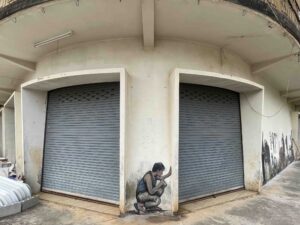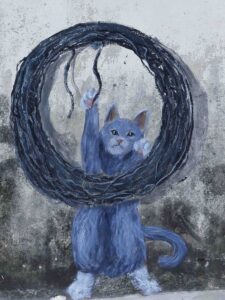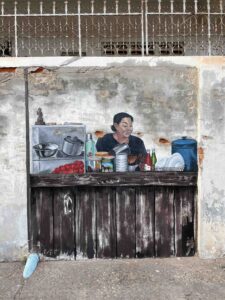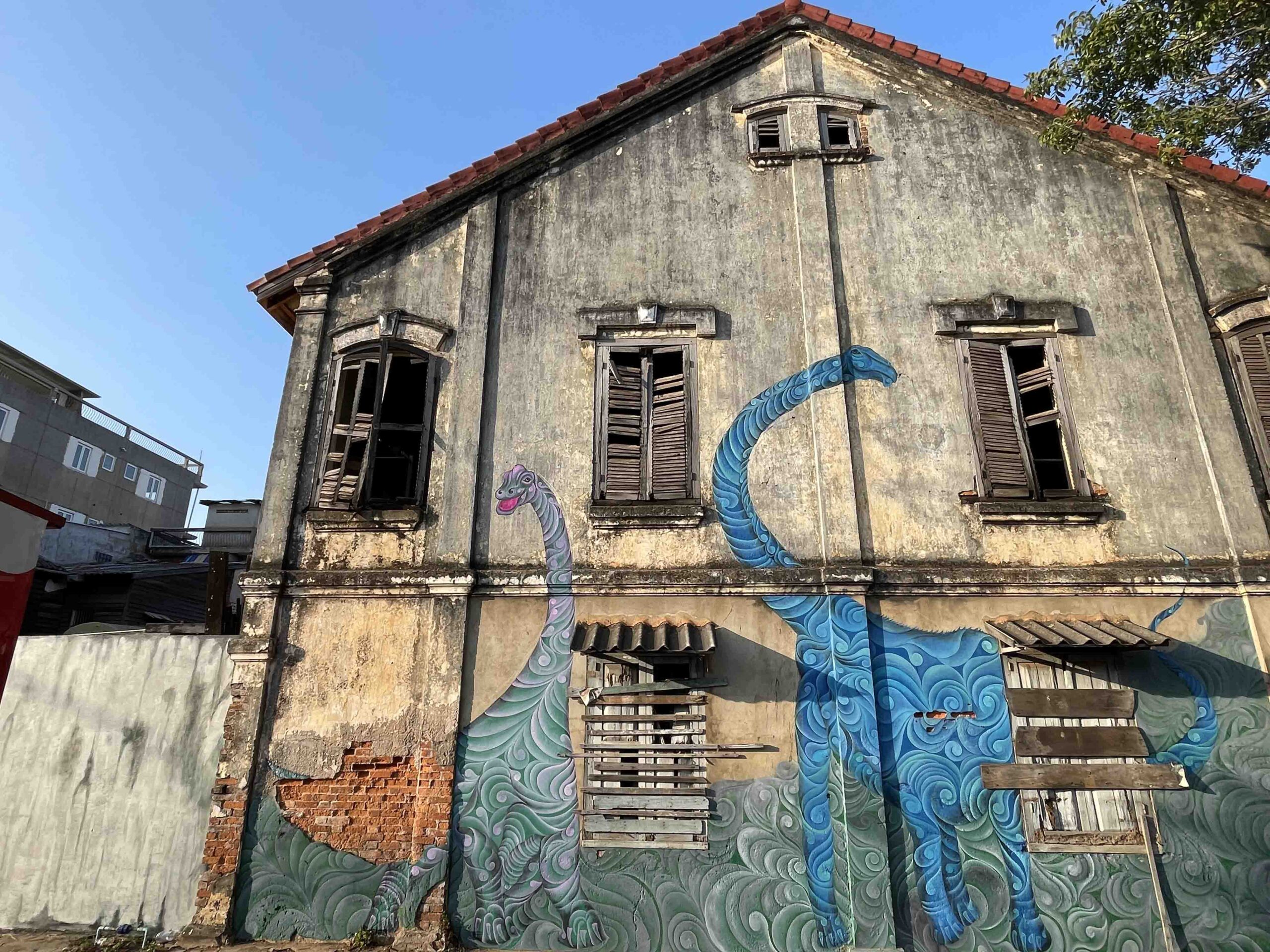New art makes this old town sparkle
Oh there she is! I cried as I came around the corner and face to face with a beautiful woman, her ornately patterned silk scarf flying in the wind and encircling a small window.
I had just left two blue dinosaurs, their gruesome smiles towering over me, and a clump of artisans toiling over woodworking tools. Before that, there were kids on bikes with kites flying above their heads. But she, in her elemental beauty, was the star of the show.
Then there were the cats looking alarmed, cute, ferocious, vigilant. So many, I thought we could change the name of the city to “Savannacat”.
The southern capital, much ignored by travelers who follow the well-trodden pilgrimage path to Luang Prabang is flowering into an equivalent city of architecture and art. Street art.

Old French buildings with their pastiche of peeling paint are now home to well-scented coffee bars and restaurants. Its wide streets offer skyscapes that blend into the huge expanse of the Mekong River as it meets Thailand on the other side at Mukdahan. If you think Luang Prabang is old, think again.
Fossilized remains prove dinosaurs once roamed what is now Savannakhet, ancestors of the progeny still decorating the wall. Archaeology suggests humans lived in the area at least 4,000 years ago. Excavations have turned up Bronze Age artifacts and ancient copper mines, remnants of terraced agricultural systems with diversion dams and channels, stone tools, and pottery shards. Maybe even wine glasses and coffee cups.According to legend, the Phouthai and Lao people migrated from northwestern Vietnam down the Nam Ou River which is north of Luang Prabang, to the Mekong, continuing downriver, until eventually reaching present-day Savannakhet.

After being under the influence of the Champa Kingdom from the 7th to 10th centuries, the Khmer took over in the 13th century leaving Stone House and distinctive designs on the That Ing Hang Stupa. The Lane Xang Kingdom, established in the 14th century, then controlled Savannakhet. But they did not design this street art.
The old town which is now known as Kaysone Phomvihane District was conceived of as part of the overall restoration of the vintage buildings, many dating from the French Colonial days. APA Incorporated undertook the task of listing and mapping the old city, in order to revive the city’s pride, identity, and culture. The city’s old facades will be renewed as part of this project which is hoped will attract tourism and investment.
Now it is the site of a treasure hunt. Hey, look at that! Oh wow, what inspired that sci-fi character? What will we find around this corner?
An art exhibition in fact. A wonderful collection of pen and ink drawings of old buildings done by Mr. Phetsalard. The works were exhibited appropriately in the city’s timeworn gallery. Juxtaposed with his classic depictions of the city’s architecture, were equally detailed drawings of young men kickboxing. In my mind, the colonial buildings look suitably aloof from the tug of muscles mounted on the other easels.

It turns out the artist both supervised and contributed to the street art, some of which is serious, depicting local history and artisans, most is hilarious or inventive and gives the visitor a real challenge. How many can you find and photograph? How many cats do you find and how many feline expressions? How many village scenes, how many kids? What did you learn about artisans and what they made? Do you see the same round cakes depicted on walls on sale in the streets? How many artworks did you find? Time for a coffee?
Hathachan Nanthavong, himself an artist, photographer, and graphic designer, told me that most of the street art was done by artists and teachers from schools in the city. Around twelve people only three of whom were themselves from Savannakhet were involved. Quite a team.
The last time I visited Savannakhet, the city was unimpressive, but that predated the recognition that this was a city worthy of restoration, pride in antiquity, and of course the arts. All of which are signs of the city’s revival.

GETTING THERE
Lao Airlines flies daily from Vientiane to Savannakhet.
MORE INFO
The street art and revitalization of Savannakhet is being managed by architectural consultancy APA Inc. Follow their work at fb.com/apalaos
Text BY Melody Kemp
PHOTOGRAPHS BY Jason Rolan / MELODY KEMP



 ລາວ
ລາວ
